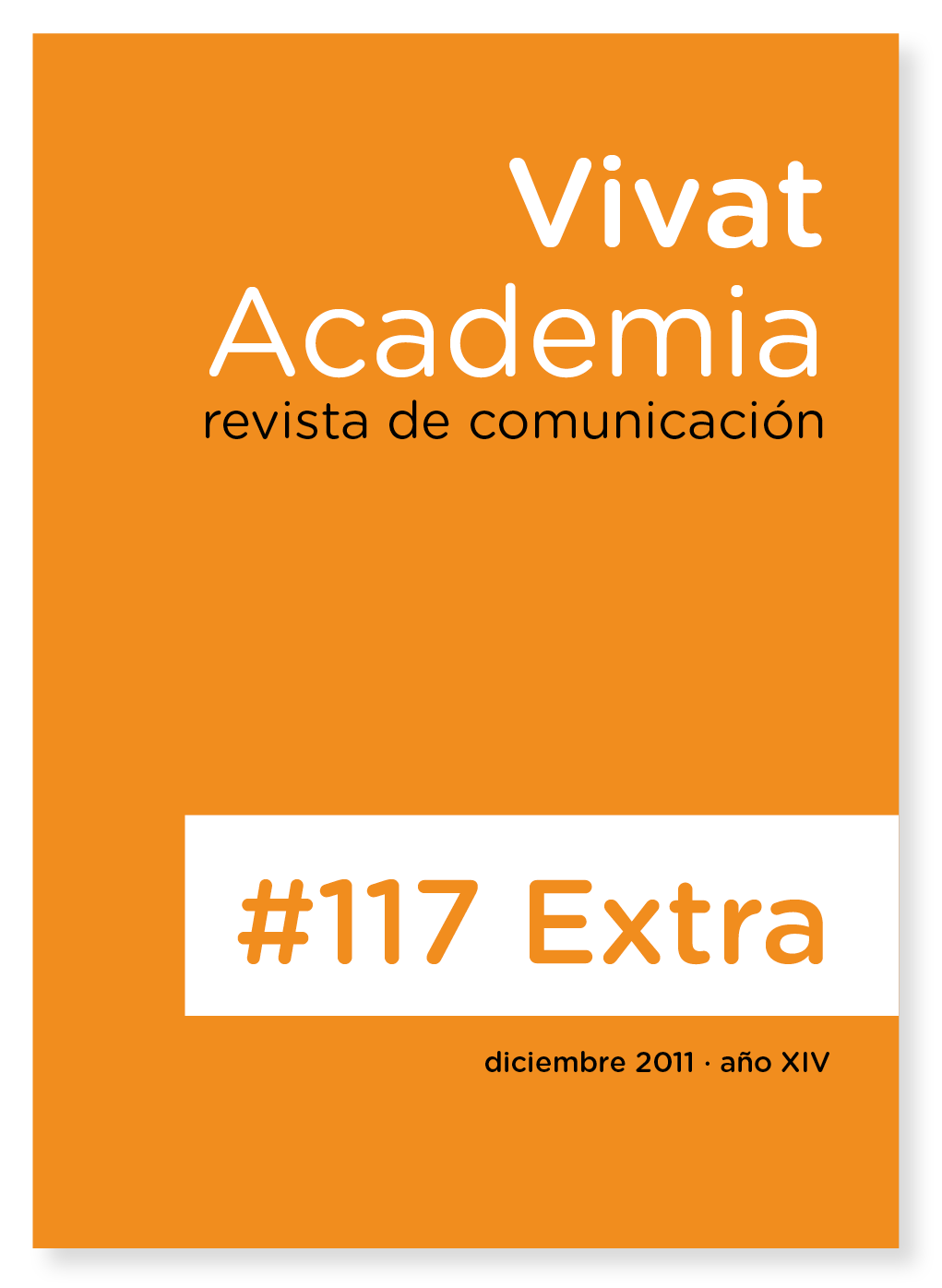Uso y modificación de las notas de prensa dependiendo de las características de los periódicos
Contenido principal del artículo
Resumen
Descargas
Detalles del artículo
Aviso de derechos de autor
El autor principal debe entregar obligatoriamente la carta de cesión de derecho de autoría, según el modelo dispuesto por Vivat Academia. Revista de Comunicación en la que se declara la cesión de derechos de autoría a la revista y se hacen explicitos los derechos de los autores respecto a la difusión y explotación del manuscrito una vez publicado.
Citas
Aronoff, C. E. (1976). Predictors of success in placing releases in newspapers. Public Relations Review, 2: 43-57.
Busto, L. (2011). Eficacia de la nota de prensa en la comunicación institucional. El caso de la Fundación Atapuerca. Trabajo de investigación para la obtención de la
Suficiencia Investigadora. Universidad de Burgos, Burgos.
Downing, P. A. (1996). Proper names as a referential option in English conversation en FOX, B. Amsterdam: Studies in anaphora John Benjamins.
Drew, D. & Wilhoit, C. G. (1976). Newshole allocation policies of American daily newspapers. Journalism Quarterly, 53: 434-440.
Dunwoody, S. & Ryan, M. (1983). Public information persons as mediators between scientists and journalists. Journalism Quarterly, 59: 647-656.
EL PAÍS. Publicidad 2010. Recuperado el 16 de marzo de 2011, de: http://www.elpais.com/corporativos/elpais/publi.html?valor =3&subvalor=1
Fishman, M. (1980). Manufacturing the news. Texas: University of Texas Press.
Gans, H. (2004). Deciding what's news: a study of CBS Evening News, NBC Nightly News, Newsweek and Time (24 ed.). Nueva York: Phanteon Books.
Gitlin, T. (1980). The whole world is watching: the mass media in the making and unmaking of the new left. California: University of California Press.
Goodell, R. (1975). The visible scientists. Boston: Little, Brown and Company. Jeffers, D. W. (1977). Performance expectations as a measure of relative status of news and PR people. Journalism Quarterly, 54(2): 299-306.
Lacy, S. & Bernstein, J. M. (1988). Daily newspaper content's relationship to publication cycle and circulation size. Newspaper Research Journal, 9: 49-57.
Morton, L. P. (1984). Tesis “The relationship of newspaper characteristics and types of releases on publications”. Oklahoma State University. Oklahoma.
Morton, L. P. (1986). How newspapers choose the releases they use. Public Relations Review, 12( 3): 22-27.
Morton, L. P. (1988). Effectiveness of camera-ready copy in press releases. Public Relations Review, 14(2): 45-49.
Morton, L. P. & RAMSEY, S. (1994). A benchmark study of the PR news wire. Public Relations Review, 20(2): 171.
Morton, L. P. & Warren, J. (1992). Acceptance characteristics of hometown press releases. Public Relations Review, 18(4): 385-390.
Sanford, A. J., Moar, K. & Garrod, S. C. (1988). Proper names as controllers of discourse focus. Language and Speech, 31: 43-56.
Stocking, S. H. (1985). "Effect of public relations efforts on media visibility of organizations” en Journalism Quarterly, 62(2): 358-366.
Stone, G. C. & Morrison, J. (1976). Content as a key to the purpose of community newspapers. Journalism Quarterly, 53: 494-498.
Tuchman, G. (1978). Making news: a study in the construction of reality. Nueva York: Free Press.
Walters, L. M. & Walters, T. N. (1992). Environment of confidence: daily news paper use of press releases. Public Relations Review, 18: 31-46.
Whitlow, S. S. (1977). How male and female gatekeepers respond to news stories of women. Journalism Quarterly, 54 (3): 573-579.
Wilkie, T. (1996). Sources in science: who can we trust?. The Lancet, 347: 1308-1311.






